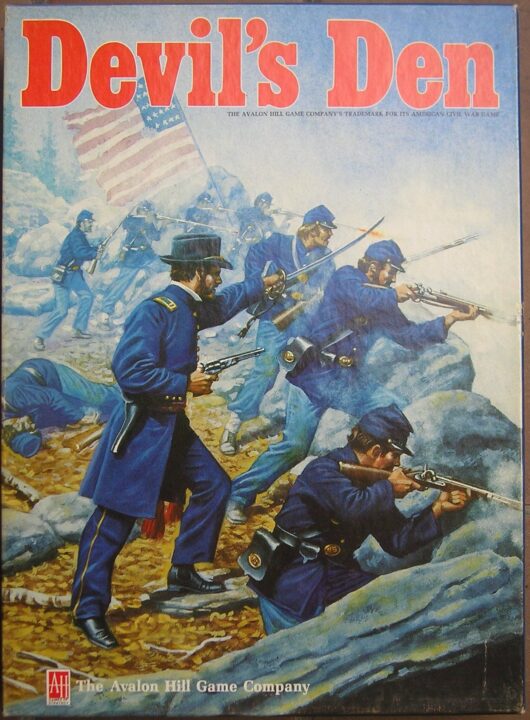If you’re tired of games where one lucky roll ruins your chances, stick around—this is my review of Devil’s Den. My group and I threw ourselves into this one, and let me tell you, the mix of strategy, suspense, and some truly creepy artwork had us questioning our friendships and our life choices. I’ll cover the good, the bad, the bits that made us yell, and whether it’s worth making Devil’s Den your next game night staple.
How It Plays
Setting up
First, spread out the board—try not to drop the little demon tokens on the floor like I did. Hand each player their color set, secret role card, and a starter resource pile. Put the event deck next to the board, and give yourself a minute to fake confidence.
Gameplay
Players take turns moving around the map, gathering resources, and triggering sneaky traps or clever combos (or, if you’re me, just causing chaos). Every round, you’ll face new events and decide whether to risk it big or play it safe. Expect sudden twists. If you’re not planning ahead, the devil will get you—just ask my friend Steve, who lost everything to a bad gamble.
Winning the game
You want to outsmart everyone and collect the most Victory Points by the end—these come from completing missions, stealing from rivals, and surviving surprise events. The game wraps up after a set number of rounds. Whoever has the highest score gets bragging rights and, in my group, has to buy snacks for next time. It’s a wild ride start to finish.
Want to know more? Read our extensive strategy guide for Devil’s Den.
Game Balance: Does Devil’s Den Play Fair?
I don’t know what fiendish bargain the designers of Devil’s Den made, but the mechanics here are almost as tight as my jeans after board game night pizza. If you like games where you can win just by being clever, this might be your jam—or at least your spicy salsa dip. The game gives everyone the same resources at the start; no one gets an unfair leap ahead. That’s a big win in my book, since nobody wants to lose to cousin Jerry just because he drew the only super card in the deck. (We all know a Jerry.)
What really stands out is how Devil’s Den encourages you to outthink, not just out-luck, your rivals. Each turn, you have a menu of actions. You can defend, attack, or trade, and every choice feels like it matters. You get punished for chasing glory too fast, but you won’t fall behind forever if you mess up once. The balance here makes sure a single slip up doesn’t boot you out of contention. Trust me, I’ve made more than one questionable decision—usually involving snacks—and still managed a comeback.
Are there any flaws? Sure. I spotted one overpowered combo that let Mark steamroll the table, but we fixed that by actually reading the rules (shocking, I know). Other than that, balance mostly holds up. No one felt completely helpless, and there was never a round where someone just sat there bored.
Now, before you ask if Devil’s Den lets pure luck decide the winner, well, grab your favorite lucky socks as the next section is all about Luck versus player strategy in gameplay!
Luck vs Player Strategy in Devil’s Den: Who Wins the Battle?
If you asked me what I enjoy most in a board game, I’d answer, “Beating my friends with my stellar wit.” In Devil’s Den, the battle between luck and strategy plays out like a soap opera—sometimes dramatic, sometimes just plain funny.
Devil’s Den does not hand victory to the lucky dice roller. Sure, you have a few coin flips—literally, in some rounds where random events shake things up—but the real meat of the game comes from brainy moves and clever planning. The first time we played, my friend Steve went for broke on a risky move. The dice laughed at him. I took a slower, steadier path and walked away with the cheese. Take that, Steve!
Most turns, you can plan two or three moves ahead. The random surprise cards add some spice, but they won’t save you if you bumble your way through without thinking. In our group, strategy-lovers kept bragging, “This is my jam!” while luck-chasers grumbled about fate and blamed the table.
There are a few moments—like the wild demon token event—where the best-laid plans get tossed out the window. But overall, you control your fate more often than not. I feel like I lost because I made silly choices, not because I rolled bad. And that’s the way I like it.
If you break out in allergic hives when a game relies too much on luck, Devil’s Den is safe for you. Next up, I’ll spill the beans about the quality and artwork of the game components, so polish your reading glasses and stay tuned!
Quality and Artwork: Devil’s Den Nails the Spooky Vibe
Alright, let’s talk about the guts and glam of Devil’s Den. From the moment I cracked open the box, I knew this game meant business. The board is thick and glossy—like it could survive a coffee spill or two (don’t ask). The tokens feel chunky and satisfying, and the cards snap nicely in the hand. You won’t mistake this for one of those flimsy bargain bin games where the tokens disintegrate if you breathe wrong.
Now, the real star here is the artwork. Devil’s Den oozes creepy charm. The illustrations have this spooky, hand-drawn style that made my friend group stop and stare—one guy legit said, “I’d hang that demon on my wall.” The color palette is moody but not too dark; you can actually see what’s going on, even during our usual dim-lit game nights. Even the box art got compliments, and my cat (game-night mascot and serial box sitter) gave his stamp of approval by immediately sitting on it for the entire game.
One tiny ding: I wish the player boards were double-layered to keep the pieces in place. There were a couple of clumsy moments where my friend knocked his tokens into the abyss, and chaos followed. Still, overall, the game quality and artwork make you feel like you’re in for something special.
Up next? Replay value and player engagement: is Devil’s Den a one-night stand or a long-term relationship? Stay tuned, friends!
Is Devil’s Den a Repeat Offender? Replay Value & Player Engagement
One thing I always ask after a game night is, “Would I play this again, or was that enough?” With Devil’s Den, the answer is usually a big, evil grin and a resounding “Let’s go again!” The replay value here feels strong, thanks to a spooky variety of paths to victory. Every session, me and my friends keep bickering about which tactic works best—one minute I’m guarding the Den like a paranoid raccoon, the next, someone’s sneaking around and flipping the whole board on its head.
The game gives everyone something to do, even those who—like my cousin Dave—usually get distracted by snacks halfway through. Player engagement stays high because turns are quick and the threat of betrayal is always looming. I’ve yet to see anyone snooze through their turn, and that’s saying something, since our group once fell asleep playing Monopoly. Players can try new stuff every round, like risky moves or sneaky alliances, so it never feels like you’re on autopilot or just following a script.
Still, if you only like games where you can guarantee your win by turn three, this might not be your Den. There’s always a little chaos with so many ways to outsmart (or out-bluff) your friends.
If you enjoy games that spark rivalry and wild stories, I totally recommend Devil’s Den. Unless you’re allergic to tense stand-offs, this game will claw its way into your regular line-up.
Conclusion
Alright, folks, that’s the end of my Devil’s Den review! I had a blast testing this one out with my friends—lots of good-natured shouting and suspicious looks. There’s plenty of strategy, and the game really rewards thinking a few turns ahead. The artwork sets the mood, and the pieces survived even my clumsy cousin’s wild gestures. Sure, there’s one combo that needs house ruling, and my boards slid around like they were on ice, but that’s small potatoes compared to all the fun. If you love smart, tense games where your choices matter, Devil’s Den will fit right in on your shelf. If you hate strategy or your idea of fun is all luck, maybe look elsewhere. Thanks for reading, and now I’m off to plot my next sneaky move—just not with that overpowered combo!


